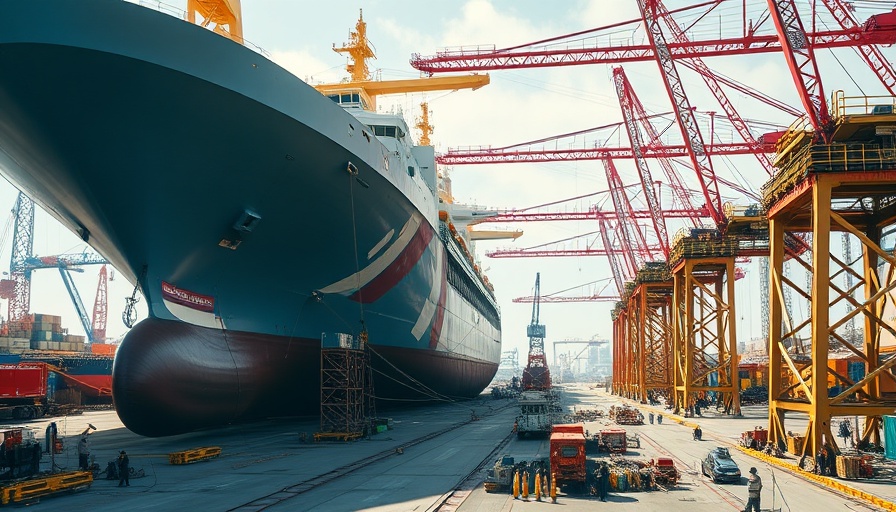
Under Pressure: A New Era for U.S.-China Maritime Trade Relations
Recent developments in U.S.-China maritime trade have stirred significant conversation as the United States proposes to levy fees on Chinese ships docking at U.S. ports. This contentious measure, termed as "fighting fire with fire," signals a decisive turn in the regulatory landscape governed by the Office of the United States Trade Representative (USTR). By imposing these fees, the U.S. aims to counteract China’s growing dominance over the maritime, logistics, and shipbuilding sectors, which has reportedly escalated over nearly three decades.
Why These Changes Matter Now
The recent Section 301 investigation revealed alarming findings about China’s strategies designed to monopolize critical shipping sectors. The USTR identified these practices as threats to American commerce. As outlined in public comments requested from stakeholders by the USTR, the maritime landscape is at a pivotal juncture, posing both risks and opportunities for U.S. businesses, especially those in sectors reliant on international shipping.
Understanding the Proposed Fee Structure
The fees set by the USTR could reach up to $1,500,000 on Chinese-operated vessels, directly adding pressure to the costs of imported goods and shipping. This proactive approach is not merely a punitive effort; it is intended to incentivize the use of U.S.-built vessels and to reinforce domestic maritime businesses which have suffered in the shadow of China's market influence. The intended outcomes include enhanced competition, diversification in sourcing, and increased operational resilience.
Future Predictions: A Shift in Global Trade Dynamics
As these changes unfold, experts predict a ripple effect throughout the global trade ecosystem. If effectively implemented, the fees and restrictions could foster a renaissance in U.S. shipbuilding and logistics, reviving industry standards and job markets that have been under strain. As highlighted in recent analyses, the maritime sector has the potential to play a crucial role in enhancing the broader U.S. economy, particularly in the Bay Area where tech and maritime innovation intersect.
The Broader Impacts on Business Trends
Bay Area businesses, especially those involved in shipping and logistics, may want to consider how these changes impact shipping costs and operational practices. With rising tariffs and fees, companies might need to revisit their supply chain processes and strategies to mitigate increased costs. Additionally, investors may see emerging opportunities in businesses that adapt effectively to this new regulatory framework.
Counterarguments: The Risks of Escalation
While the proposed fees aim to restore balance, some warn of the risks associated with escalating tensions between the U.S. and China. Critics argue that this approach may lead to retaliatory actions by China, further complicating global supply chains and affecting industries beyond shipping. Such dynamics could ultimately impact prices and availability of goods for consumers and businesses across various sectors.
Conclusion: Preparing for Change
With the USTR's actions, U.S. businesses, particularly those in the Bay Area, should remain vigilant. Understanding the implications of these proposals is critical for navigating the impending changes in international trade and maritime logistics. For businesses seeking to adapt and thrive amid these transformations, now is the time to strategize and engage with policymakers to safeguard their interests and contribute to a robust, sustainable maritime ecosystem.
 Add Row
Add Row  Add
Add 



Write A Comment